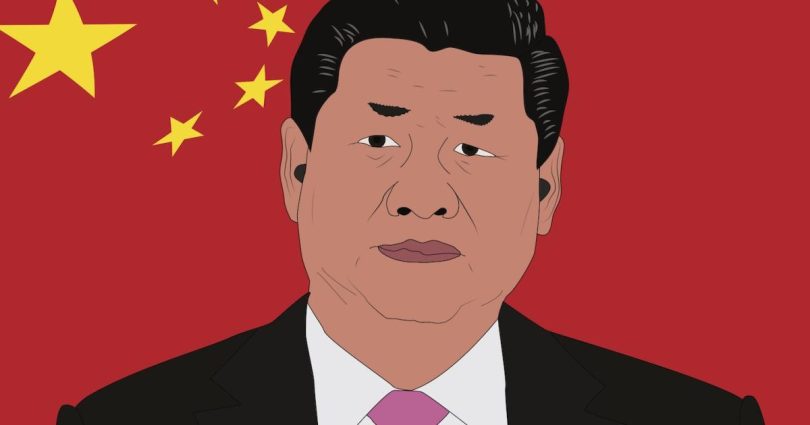[ad_1]
On Sept. 22, 2020, Chinese President Xi Jinping made an unexpected announcement in an address to the United Nations. He declared China would “aim to have CO2 emissions peak before 2030 and achieve carbon neutrality before 2060,” a level of ambition that surprised many international climate advocates.
China’s net-zero goal has strengthened the financing landscape for the country’s climate tech sector. Driven in part by the regulatory crackdown on Internet companies, investors in China have sought to align their portfolios with government policy. This trend has provided tailwinds for electric vehicle makers and clean energy startups, which Beijing views as critical not only for its climate goals but also for its strategic and economic interests.
The divergent fates of high-tech sectors in China
Experts on Chinese climate tech point to Xi’s speech as a turning point for the industry. “Chinese venture capitalists have shown great interest in climate tech ever since President Xi pledged to achieve carbon neutrality,” said Yafu Zhao, the Shanghai-based head of climate fintech at New Energy Nexus, a startup accelerator. “It feels like everyone has FOMO, fear of missing out.”
Relative to decarbonization-focused startups, consumer-facing tech companies have had a more fraught relationship with Beijing. In November 2020 — two months after Xi’s U.N. speech — Chinese regulators blocked the initial public offering of Ant Financial, an affiliate of e-commerce behemoth Alibaba. The thwarted IPO marked the beginning of a crackdown on China’s Internet giants. Over the course of 2021, the Chinese government introduced a slew of new rules and fines ostensibly aimed at reining in monopolistic practices, wealth inequality and other social ills. The moves spooked shareholders across sectors ranging from online education to gaming.
Public markets have priced in the impact of Chinese government policy. During the 12 months following Ant Financial’s attempted IPO, the Hang Seng Tech index, which includes many of China’s major Internet and tech companies, fell more than 25 percent. However, the CSI New Energy index, which consists of Chinese clean energy stocks, soared 100 percent over the same period.
China learned how to leverage private capital from the West, and the West learned from China how to use policy to direct and promote industry.
Data from Pitchbook offers a window into how the climate tech boom has played out in private markets. In 2020, VC firms invested $5.6 billion in 130 Chinese climate tech deals. In 2021, funding jumped to $8.7 billion across 211 deals. Investment firms such as Hillhouse Capital, which helped pioneer private equity in China, have established climate-focused funds. Lightspeed China Partners, a top early-stage VC firm, has raised a fund dedicated to sectors aligned with government policy, including climate tech.
Many observers note it is unsurprising investors in any country would take cues from policymakers. “Alignment with government policy is strategic, no matter where you are, but including in China,” said Marilyn Waite, a co-host of the China Cleantech podcast and the managing director of the Climate Finance Fund, backed by the Hewlett Foundation and European Climate Foundation.
However, China’s government model means the country’s policies can be particularly impactful, according to Dan Kammen, a professor of energy at the University of California, Berkeley. “Because of the centralized nature of the Chinese system, when they commit to something, they commit to it,” said Kammen, who has research partnerships with four Chinese universities.
Who is investing, and in what?
Sequoia China, an arm of U.S.-based Sequoia Capital, is China’s most prolific venture investor, according to a leaderboard maintained by Crunchbase. The firm is also one of China’s most active backers of climate tech startups, and its dealmaking has accelerated significantly in recent months. During the first half of 2022, Sequoia China participated in 11 climate tech deals (about 15 percent of its total deals). In contrast, from 2017 to 2021, the firm averaged around three climate tech deals each year (accounting for around only 3 percent of its total deals).
Half of Sequoia China’s climate tech investments from the past five years have centered around the same theme: sustainable transportation. These mobility deals included high-profile electric vehicle companies such as ROX Motors and Xpeng Motors, as well as well-funded “micromobility” startups such as Meituan Bike. Sequoia China also cut checks to Neptune Robotics, a startup working to decrease the carbon footprint of maritime vessels, and HT Aero, an “urban air mobility” company that raised a $500 million Series A to develop flying electric cars.
Waite, who formerly led clean energy finance grantmaking at the Hewlett Foundation, welcomed investors’ interest in transportation. However, she cautioned that other sectors also require investment to decarbonize. “There all of these solutions like land use and agriculture that we hear less about but that [can be backed] by venture capital and are scalable,” she said. “I think we could use more climate tech / ag tech nexus funds, especially in such a large market like China.”
Walter Ge, a Chinese agtech venture capitalist, agreed that electric vehicles and other new energy technologies, such as batteries and solar panels, have received the lion’s share of climate tech funding. Yet Ge explained that as China’s decarbonization policies “spread across the sectors,” he also expects “the funding will spread to a variety of sectors in the future.”
Private VC firms such as Sequoia China are not the only investors putting big money into Chinese climate tech. Tellingly, government-sponsored funds have made climate investments as well. Shenzhen Capital Group has backed a number of energy storage and sustainable transportation companies, including four in the first half of 2022 (representing 21 percent of its overall deals, versus an average of only 2 percent from 2017-2021, according to Crunchbase data). The fund is affiliated with the provincial government of Shenzhen, the region sometimes referred to as “China’s Silicon Valley.”
These provincial investment funds are powerful players in China’s tech sector. “Every provincial government, even every city government, has this type of fund,” said Hong Miao, who leads the Sustainable Investment Program at the World Resources Institute’s China office. Meanwhile, China’s central government has set up a $13 billion National Green Development Fund, which is leveraging private capital to spur investment in areas such as green steel.
China’s private corporations and state-owned enterprises (SOEs) have also helped nurture climate tech. China’s largest tech companies, including Alibaba and Tencent, have pledged to reach net-zero emissions from their operations by 2030. Meituan, an on-demand delivery giant, has created a Meituan Green Tech Fund to support research. SOEs, which account for around 25 percent of China’s GDP, have similarly crafted plans in response to Beijing’s net-zero goal.
As China goes, so goes the world
Any path to addressing the climate crisis runs through Beijing. China produced an estimated 30 percent of global greenhouse gas emissions in 2020, far exceeding the 10 percent share of emissions attributed to the U.S. In fact, China’s GHG footprint surpassed emissions from the entire developed world — often defined as all member states of the Organization for Economic Co-operation and Development, along with the European Union.
As a result, Xi’s climate neutrality goal was major climate news. “The China 2060 policy is very impactful,” said Kammen, a coordinating lead author of the Intergovernmental Panel on Climate Change’s Nobel Prize-winning 2007 report. “2060 is a little further off than we would like, but given how coal-intensive China is, it isn’t radically different than the U.S. strategy currently to go carbon neutral by 2050.”
To achieve its climate goals, China has become the world’s largest investor in the clean energy transition. A February report from Bloomberg New Energy Finance dubbed China the “growth engine of the world’s low-carbon spending.” Out of the unprecedented $755 billion spent globally in 2021 on low-carbon technologies (including both public and private investment), China accounted for $266 billion, or 35 percent. That number was up from $135 billion in 2020, or 27 percent of that year’s global low-carbon investment, according to the BNEF report.
I think we could use more climate tech / ag tech nexus funds, especially in such a large market like China.
The vast majority of China’s climate tech spending went toward deploying relatively mature technologies, including solar panels, wind turbines and electric vehicles. However, policymakers and investors have also invested heavily in developing earlier-stage technologies. Chinese startups have received more than one-third of global venture capital funding for the low-carbon technology sector.
Climate tech and US-China competition
Aside from its climate implications, the energy sector is also strategic because of its connections to national security and economic independence. As part of a “Made in China 2025” plan released in 2015, Beijing identified 10 key strategic industries to boost. The list included “new energy and energy-saving vehicles” and “energy equipment,” a category that encompasses solar panels, wind turbines, hydropower and nuclear energy infrastructure. Under the plan, China hopes three of the world’s five largest electric vehicle companies will be Chinese and that Chinese companies can attain 80 percent market share in renewable energy equipment.
The U.S. has only recently embraced a similar approach to boost its climate tech sector. The Inflation Reduction Act, signed by President Joe Biden on Aug. 16, provides over $300 billion in incentives to support clean energy, electric vehicles and other green technologies. The legislation ties much of its largesse to requirements that companies build out supply chains in the U.S. and allied countries.
The U.S. and China seem to have learned industrial policy lessons from each other, said Miao of the World Resources Institute. “China learned how to leverage private capital from the West, and the West learned from China how to use policy to direct and promote industry,” she observed.
Beyond climate tech, competition is occurring across other high-tech sectors, most notably with semiconductors. “For semiconductors, it’s all about technology independence. For renewables, it’s also about energy independence,” said Zhao of New Energy Nexus.
China’s $14 billion National Green Development Fund is the country’s second-largest government investment fund, trailing only the semiconductor-focused “Big Fund,” which raised $20 billion in 2014 and $30 billion a few years later. In the U.S., the passage of the Inflation Reduction Act followed that of the CHIPS Act, which allocates over $50 billion for U.S. semiconductor manufacturing.
Can U.S.-China competition help spur the development and deployment of climate tech? Kammen of UC Berkeley said the U.S. and China “need each other” because they have complementary strengths. “One is a little better on the innovation side — just because the university system in the U.S. is so good, the national lab system is so good — and China is really good at scaling,” he explained. “I would say the U.S. has a little innovation advantage, China has a large deployment advantage.”
Waite of the Climate Finance Fund agreed that the climate would be best served by cooperation, not competition between the two countries. “I just don’t see how we can solve [climate change] in silos,” she said. “I do not find the current discourse coming from the U.S. side helpful in fostering collaboration and cooperation around creating a livable planet for all.”
[ad_2]
Source link







